The war in Ukraine has damaged thousands of buildings. This plan could save them
Across Ukraine, the war zone has become disturbingly civilian. Missiles have struck residential buildings—most certainly on purpose—leaving deadly scars in the cities, towns, and lives of everyday people.
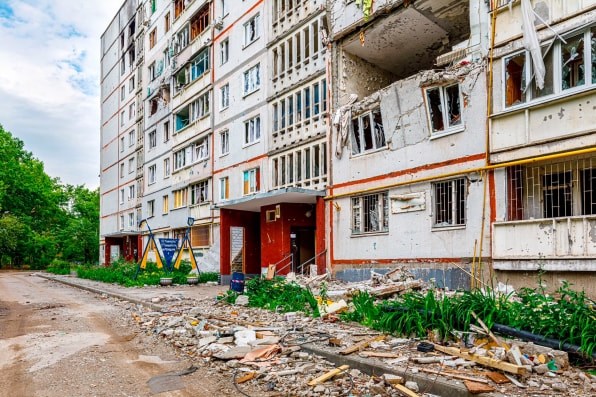
Thousands of buildings have been partially or fully destroyed. But Ukraine’s Soviet-era residential architecture, with its blocky, no-frills design, is surprisingly resilient. Even after being partially blown up, these concrete buildings are capable of being repaired. A collaboration between architects in Canada and Ukraine is already developing a plan to rebuild them.
Through a modular construction method called Speedstac, Toronto-based WZMH Architects plans to help Ukraine recover by tearing out damaged parts of apartment buildings and slotting in completely new rooms. Like life-size building blocks, these prefab-modular units would splice into place, grafting new apartments onto old and saving whole buildings from demolition.
Zenon Radewych, principal at WZMH Architects, has been leading the Speedstac project, and he says repairing buildings could be a more economical way to deal with the widespread damage of the war.
“The order of magnitude of tearing down all those buildings and building new ones, that’s going to take a lot of time and cost a lot of money,” Radewych says. “It doesn’t make sense to knock everything down and rebuild it.”
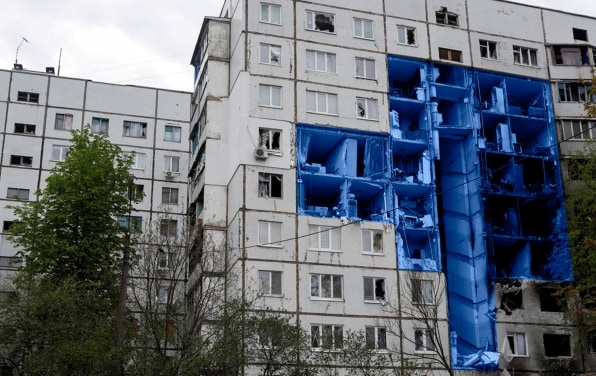
Splicing new structures into damaged buildings is less complicated than it sounds, says Radewych, since most of the residential buildings in Ukraine were built with a standard design, and an emphasis on efficiency, out of concrete elements that stack like uniform building blocks, making it feasible to replace a section at a time. “There are thousands of these apartment buildings, not just in Ukraine but throughout Eastern Europe, that were built post-World War II,” Radewych says. “They’re three to nine stories, and very modular. They’re set up in a way that you could easily slice off a portion of the building that has been damaged.”
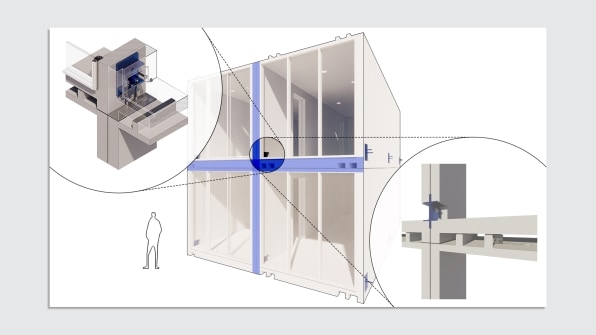
Radewych says the idea came after hiring some architects from Ukraine to come work in WZMH’s Toronto office after the war broke out. “We were looking at this and said, hey we can easily slide in our solution,” he says.
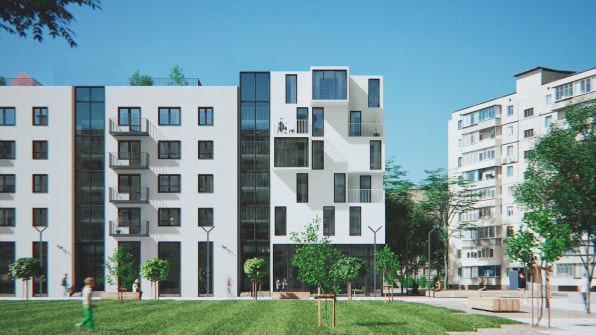
For buildings with only partial damage, the replacement would be relatively straightforward, Radewych says. The damaged building would be stabilized as the destroyed sections are cleared out. Then, using locally built concrete modules, sized to the exact dimensions of the cavities in the building, new structural units would be craned into place from above, slotted in like Tetris blocks. Designed as self-contained rooms with electrical and plumbing built inside their walls, these modules can be retrofitted to the building’s existing infrastructure and function like transplanted organs. “At the end of the day it, would feel very much like you’re walking into a brand-new building,” Radewych says.
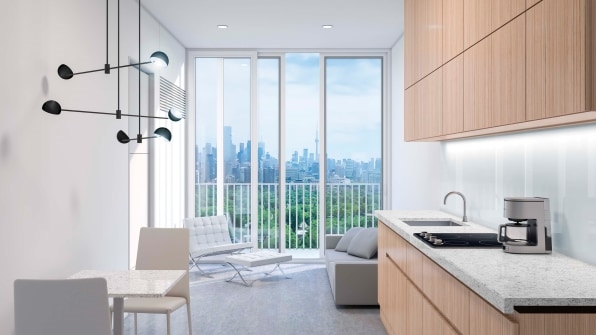
His firm has partnered with builders and developers in Ukraine to begin exploring potential sites where this concept could work. Drone and lidar scans are being prepared to create detailed 3D models of damaged buildings to assess their structural constraints and dimensions. Radewych says he’s also hoping to better understand the capacity for adding more floors onto these concrete buildings, stacking modules into and on top of damaged apartments. “There might be solutions where we tear down a building and nothing replaces it, but the density lost is added to an existing building,” he says.
Radewych says he’s hoping to work with local partners to get the first pilot modules built and installed within the next six months. Then after about a year of planning, he says, module manufacturing and construction could start to happen in more stable parts of the country. Radewych says this is not likely the only architectural solution that will be proposed for helping Ukraine recover, but the more ideas there are, the better.
“The rebuilding of Ukraine isn’t going to happen overnight,” Radewych says. “I think it’s going to be a 10-year project.”
(19)



